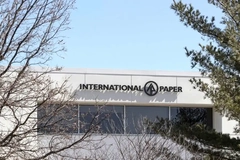Action on additives: Are bio-based solutions industry’s answer to tightening chemical legislation?
01 Feb 2023 --- Additives in food packaging serve multiple functions, from grease repellents to colorants. However, many additives in food packaging have been flagged over the years for containing harmful chemicals detrimental to human health.
“Food packaging materials such as paper, cardboard, foams and plastics can involve the use of additives depending on the intended use. Additives impart properties such as flexibility, rigidity, water and grease proofing,” Dr. Neal Saab, senior scientific program manager for the Institute for the Advancement of Food and Nutrition Sciences (IAFNS), tells PackagingInsights.
While some additives serve important functions for food and beverage packaging, some have also been revealed as destructive to human health. Some of the most known harmful chemical additives are Bisphenol A (BPA) and PFAS. Meanwhile, potential alternatives for food packaging may lie in the exploration of bioplastics, as they have been showing promise within the packaging industry.
“PFAS accumulates and persists in our bodies. People across Europe are exposed to these ‘forever chemicals’ through food, water, consumer products and materials in our homes and workplaces. There is an urgent need for the EC to address this health matter,” adds Carla Valeiras Álvarez, EU policy officer at Safe Food Advocacy Europe.
 Two hundredPFAS substances are to be banned by the EU this month. Toxic additives in food packaging
Two hundredPFAS substances are to be banned by the EU this month. Toxic additives in food packaging
BPA is banned in some EU countries and across some states in the US. The bans are due to the chemicals’ known adverse effects on human health. “Some research has shown that BPA can seep into food or beverages from containers that are made with BPA,” Francisco Muriel, director of quality and research, development and innovation department at the SP Group, tells PackagingInsights.
“Exposure to this additive is a concern because of the possible health effects on the brain and prostate gland of fetuses, infants and children. Additional research suggests a possible link between BPA and increased blood pressure, type 2 diabetes and cardiovascular disease.”
A report by Wageningen University, Netherlands, discusses how compounds naturally present in food packaging material or as a result of the production process are transferred into the food and influence its quality or safety for human health.
The study says plastics (or polymers) primarily used for food contact applications have the disadvantage of high amounts of possible migrants – when components from the plastic leak into the food product, such as polymer additives.
Other harmful chemical additives
Other dangerous additives include Primary Aromatic Amines (PAAs), which are “used to achieve colors of yellow, orange and red tones. There is doubt that various PAAs may be carcinogenic and mutagenic,” claims Muriel.
Additionally, photoinitiators are highly photoactive compounds used in printing dyes and varnishes. “Some are suspected of causing sensitization, endocrine disruption, or even cancer.”
“Phthalates are environmental pollutants. The presence of phthalates in materials can also come from chemical additives in adhesives and printing inks. Although printing inks are not in direct contact with food, it has been found that the plasticizers they contain can migrate through the food packaging material during storage in coils,” Muriel continues.
Recently, researchers found that fathers exposed to chemicals in plastics can affect the metabolic health of their offspring for two generations. They found that paternal dicyclohexyl phthalate exposure led to high insulin resistance and impaired insulin signaling in the first offspring. The same effect but weaker occurred in the second-generation offspring.  SP Group worker in its factory.
SP Group worker in its factory.
“Exposure to phthalates is cause for concern since several studies link these substances with effects on reproduction and development, the hormonal and immune systems, or damage to the liver,” Muriel notes.
Banning the “forever chemical”
PFASs are used in food packaging for their ability to repel grease and water, as well as having high stability and resistance to high temperatures – thanks to their carbon-fluorine bond. However, this bond is the strongest in organic chemistry and is responsible for their extreme persistence in the environment, which grants them the label “forever chemicals.”
“PFAS have been used for decades in packaging and other consumer and industrial applications. In packaging, they serve primarily to provide water and grease proofing to wrapping paper and, thus, promote food integrity,” says Saab.
The EU has been looking into chemicals that could cause potentially dangerous effects on health and safety to people and working on banning the common additive.
“There are many types of PFAS used in packaging and some have been determined to pose a health concern. There is a recognition that the use of PFAS in packaging should be reduced, and alternatives are under development,” Saab continues.
“There should be an EU ban on the use of PFAS in food packaging. Scientific studies have associated exposure to PFAS with severe adverse health effects, including cancer, impacts on the immune, reproductive and hormone systems, and reduced response to vaccinations. In addition, results show that some food packaging has been treated with a specific type of PFAS, known to disrupt thyroid activity,” adds EU Policy Officer, Valeiras Álvarez.
The EU decided to ban 200 PFAS substances in phases, starting February 2023. This is the first time the EU has imposed a ban on several chemicals of similar structure and properties at once.
The European Chemicals Agency (ECHA) has added PFAS products to its list due to their destructive properties, “so, it’s a matter of time before the use for food packaging is banned,” says Muriel.
Bioplastics could serve as a replacement for traditional food packaging methods. Legislation for safety
Valeras Álvarez tells us that only a few compounds of the PFAS family have been tested extensively and restricted at the global and European levels – thousands of other harmful varieties exist and are available for use.
“The EC needs to act and phase out all PFAS uses in food products in the EU. This is achievable through the restriction of the whole PFAS group under the Registration, Evaluation, Authorisation and Restriction of Chemicals (REACH).”
“We express support to the dossier submitted on January 13, 2023 by the national authorities of Denmark, Germany, the Netherlands, Norway and Sweden have submitted a proposal to ECHA to restrict PFAS under REACH. At the national level, Denmark is currently the only country that has banned PFAS for use in food packaging,” she continues.
However, Muriel from SP Group states that legislation against food packaging additives is already extensive but needs to be adequately monitored to keep all companies in compliance.
“The legislation regarding safety in food packaging is very restrictive, and it guarantees the safety of the packaging placed in the market. Comprehensive monitoring of compliance with it should be promoted to avoid unfair competition within the sector and that all packaging on the market really complies with food legislation.”
Bio-based solutions
A new sector emerging in the food packaging industry is bioplastics. The bioplastics industry is still relatively young compared to the petrochemical plastics industry, allowing for opportunities to implement bioplastic packaging.
According to a study published in MDPI, biopolymers can be utilized as functional plastic additives in synthetic bioplastics to control properties such as strength, stiffness, hardness or barrier functions. While bioplastics still contain additives, like many food packages, the additives have not been shown to cause adverse health reactions.
Polylactic acid (PLA) is an example of a promising biobased and biodegradable polymer that can be used as a food packaging material. PLA is ideal for fresh organic packaging due to its breathability. The bioplastics packaging market is expected to register a CAGR of 15.2% between 2023 and 2028, according to Mordor Intelligence.
However, bio-based solutions are generally two or three times more expensive than conventional plastics such as PE or PET, inhibiting the material’s growth for food packaging.
By Sabine Waldeck











